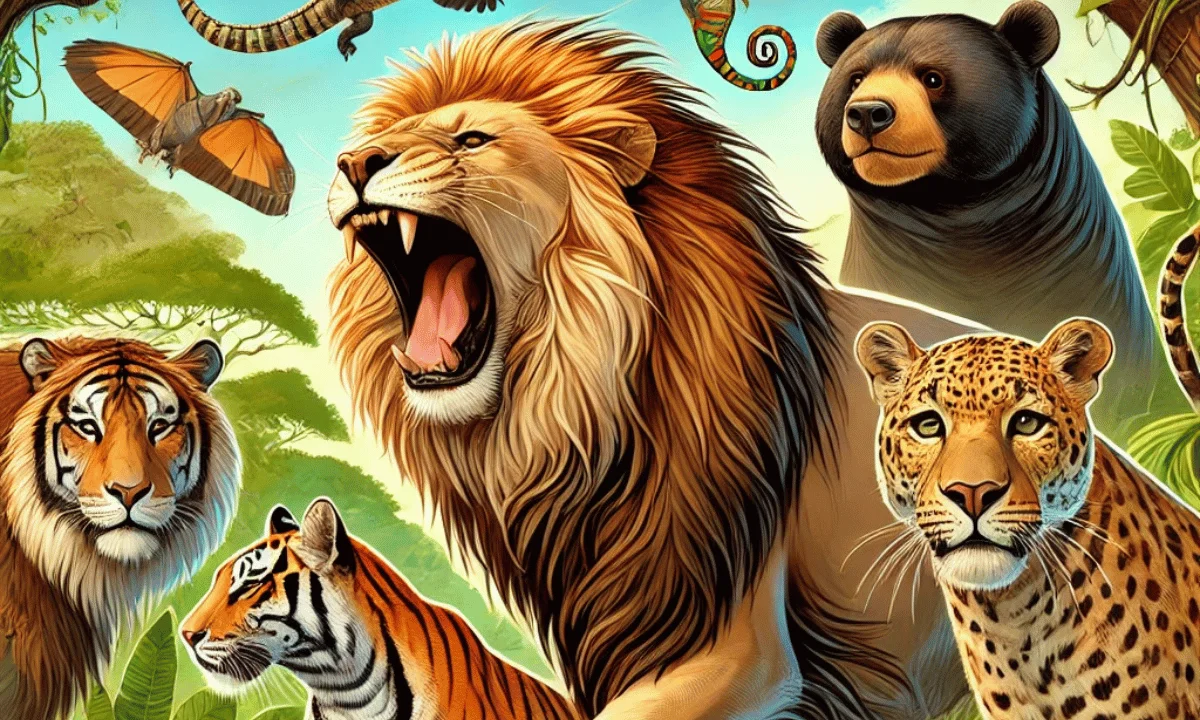Introduction
How to Tell Wild Animals Extra Questions and Answers is a humorous poem written by Carolyn Wells, which describes various wild animals in a lighthearted and amusing manner. The poem presents a playful approach to identifying wild creatures based on their behaviors and appearances. This article provides extra questions and answers that help in understanding the poem better, along with a comprehensive explanation of key themes, literary devices, and meanings.
Summary of “How to Tell Wild Animals”
The poem humorously describes wild animals and how one can recognize them. The poet introduces animals like the Asian lion, Bengal tiger, leopard, bear, hyena, crocodile, and chameleon. Each stanza describes an animal’s appearance and behavior in a humorous way, making the learning process engaging.
Extra Questions and Answers
1. Short Answer Questions
Q1: Who is the poet of “How to Tell Wild Animals”?
A: The poet of “How to Tell Wild Animals” is Carolyn Wells.
Q2: What is the poem “How to Tell Wild Animals” about?
A: The poem is about recognizing different wild animals based on their distinct features and behaviors in a humorous way.
Q3: How does the poet describe the Asian lion?
A: The poet describes the Asian lion as a large beast with a brownish-yellow color that roars loudly.
Q4: How can one recognize a Bengal tiger according to the poem?
A: A Bengal tiger can be recognized by its black stripes on yellow skin, and if it attacks, then one is surely meeting a Bengal tiger.
Q5: What humorous element does the poet use while describing the leopard?
A: The poet humorously states that if a leopard jumps on you and continuously bites, there is no use of screaming because the leopard won’t stop biting.
Q6: What is said about the bear in the poem?
A: The poet suggests that one can recognize a bear by hugging it. However, the humor lies in the fact that the bear will actually hug a person tightly in a dangerous way (as bears attack by gripping their prey).
Q7: How does the poet describe the crocodile?
A: The poet sarcastically says that a crocodile has tears in its eyes, referring to the phrase “crocodile tears”, which means fake emotions.
Q8: What is unique about a chameleon in the poem?
A: The poet states that a chameleon is an animal that looks like a lizard and has no ears or wings. It changes its color to blend with surroundings and can even become invisible.
2. Long Answer Questions
Q9: How does Carolyn Wells use humor to describe the wild animals?
A: Carolyn Wells uses humor by exaggerating the dangerous nature of wild animals in a playful and entertaining way. For example:
- She says that one will know they have met a Bengal tiger only if it attacks them.
- A leopard will keep biting, and there is no point in screaming.
- A bear hugs tightly, which can be deadly.
- The crocodile’s fake emotions (crocodile tears) are ironically mentioned.
- The chameleon is described as an animal that can even disappear (by blending into surroundings).
The use of humor makes the poem enjoyable while educating the reader about these animals.
Q10: What are the literary devices used in the poem “How to Tell Wild Animals”?
A: The poem uses several literary devices:
- Imagery: Vivid descriptions help in picturing the animals (e.g., “brownish-yellow lion with a loud roar”).
- Alliteration: Repetition of consonant sounds (e.g., “leopard leaps”).
- Personification: Giving human traits to animals (e.g., crocodile “weeping”).
- Irony: Saying something in a way that conveys the opposite meaning (e.g., “if you see it roaming free, it’s the chameleon you see”).
- Rhyme Scheme: The poem follows a consistent rhyming pattern, making it musical and easy to remember.
Q11: What message does the poet convey through this poem?
A: The poet conveys a fun and humorous way to identify wild animals. However, the deeper meaning suggests that wild animals can be dangerous, and it is important to be cautious around them. The poem also teaches basic characteristics of animals in an entertaining manner.
Q12: How does the poet’s description of the chameleon differ from other animals?
A: Unlike other animals that are described as dangerous or fierce, the chameleon is described as a creature that can blend into its surroundings. This makes it different from others because it does not attack or threaten, but instead, it vanishes. The poet adds humor by stating that if one cannot see anything, then it must be a chameleon!
Read More – How to Save Trees
Conclusion
“How to Tell Wild Animals” is a delightful and amusing poem that makes learning about different animals fun. By using humor, irony, and vivid descriptions, the poet presents an entertaining take on recognizing wild animals. The extra questions and answers provided above help in understanding the poem in detail, making it a valuable resource for students and poetry lovers alike.
By grasping the meaning, themes, and literary devices in the poem, readers can appreciate Carolyn Wells’ witty writing style while also learning about various wild animals.

1 thought on “How to Tell Wild Animals Extra Questions and Answers”